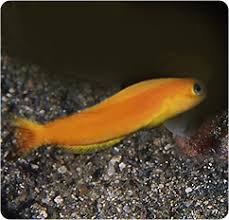Dragons in Chinese Marriage Customs and Wedding Rituals

In Chinese culture, the dragon is one of the most revered symbols, embodying power, strength, prosperity, and good fortune. It has deep roots in Chinese mythology, history, and tradition, playing an integral role in various cultural practices. One of the areas where the dragon’s influence is particularly evident is in Chinese marriage customs and wedding rituals. From the intricate wedding attire to the symbolic offerings, dragons are deeply woven into the fabric of these celebratory events, signifying blessings for a prosperous and harmonious union. This article delves into the profound role that dragons play in Chinese weddings, examining their symbolic significance, the ways in which they are represented in wedding customs, and their cultural importance in the broader context of Chinese marital traditions.
The Symbolism of the Dragon in Chinese Culture
Before delving into the specific role of the dragon in Chinese weddings, it is important to understand its overall cultural significance. In Chinese mythology, the dragon is a symbol of strength, vitality, and power. It is a divine and auspicious creature, often associated with good luck, prosperity, and success. Unlike the fearsome Western dragons, the Chinese dragon is benevolent and is believed to possess the ability to control the elements, such as rain, wind, and thunder.
The dragon is also a symbol of imperial authority and is often linked to the emperor, who was regarded as the “Son of Heaven” and a direct descendant of the dragon. In marriage, the dragon symbolizes the union of two powerful forces—male and female—coming together in harmony and balance. Additionally, the dragon is frequently paired with the phoenix, another significant symbol in Chinese culture, representing the harmony of yin and yang (feminine and masculine), which is central to Chinese beliefs about marital life.
In the context of marriage, the dragon signifies auspiciousness, fertility, and the fulfillment of desires, making it a natural and meaningful symbol for weddings. Its presence in wedding rituals is meant to bestow blessings on the newlyweds, ensuring their union is filled with happiness, wealth, and prosperity.
Dragons in Traditional Chinese Wedding Attire
One of the most prominent ways the dragon appears in Chinese weddings is through the wedding attire. Traditional Chinese bridal garments, particularly the qipao (cheongsam) and xiapei (wedding robe), often feature intricate dragon motifs embroidered or woven into the fabric. The dragon’s appearance in these garments is not only a display of wealth and status but also serves as a powerful symbol of good fortune and protection for the bride and groom.
Bridal Gowns and Embroidered Dragons:
For many Chinese brides, the wedding dress is a focal point of the ceremony. Traditionally, brides wear red gowns, as the color symbolizes happiness, good luck, and protection from evil spirits. In these red wedding dresses, dragons are commonly embroidered in gold or silver thread, with the dragon often depicted in a coiled shape, symbolizing vitality, energy, and protection. These embroidered dragons are a traditional feature of the bridal gown, symbolizing that the bride is blessed with the strength and power of the dragon.
Groom’s Attire:
The groom’s attire also frequently includes dragon motifs. The groom’s wedding robes or jackets, similar to the bride’s dress, are often decorated with embroidered dragons. These dragon motifs are intended to symbolize the groom’s power, vitality, and auspicious beginnings in his marriage. Much like the bride’s gown, the groom’s wedding attire may also feature the dragon intertwined with other symbols, such as the phoenix, symbolizing the union of yin and yang (the complementary forces of the feminine and masculine energies).
In imperial times, the groom’s wedding attire, much like the bride’s, would include the dragon as a marker of status and nobility, showing his role as the dominant force in the marriage, while the phoenix embroidered on the bride’s dress would symbolize the balance of power and harmony in their union.
The Dragon and the Wedding Procession
The dragon’s significance continues throughout the wedding procession, a central event in Chinese wedding celebrations. A traditional Chinese wedding often includes a procession where the bride, accompanied by her family, travels to the groom’s home or the wedding venue. During this procession, dragon motifs are often present in various forms, both on decorations and in the form of symbolic rituals.
Dragon-themed Wedding Decorations:
In the wedding procession, it is common to see dragon decorations adorning the venue and the wedding car. These decorations can range from paper dragons hung above doorways to elaborate dragon-shaped lanterns lighting the way. These dragon motifs are believed to guide the couple, ensuring their marriage is blessed with prosperity, fertility, and good fortune.
Dragon Dance:
A more elaborate form of dragon symbolism may involve the dragon dance, which is often performed during the wedding celebration. While the dragon dance is most commonly seen during the Chinese New Year, it is sometimes incorporated into wedding festivities as well. The dragon dance involves a long, serpentine dragon made of cloth and bamboo carried by performers. As the dragon twists and turns, it is believed to chase away evil spirits and bring good luck to the newlyweds.
The dragon dance represents the harmony and balance of the couple’s union, with the dragon’s movement symbolizing the couple’s journey together through life, facing challenges and celebrating successes. The dragon’s presence during the wedding procession reinforces the belief that the couple is entering their marriage with divine protection and blessings.
The Dragon and the Phoenix: Yin and Yang in Marriage
One of the most iconic representations of the dragon in Chinese wedding rituals is its pairing with the phoenix, which is another central symbol in Chinese culture. The dragon and the phoenix are often depicted together in wedding attire, decorations, and rituals, symbolizing the perfect balance of opposites and the union of two complementary forces.
The dragon represents masculinity, strength, and power, while the phoenix represents femininity, beauty, and grace. Together, they embody the yin and yang philosophy, which is integral to Chinese belief systems. In the context of marriage, the dragon and phoenix symbolize the ideal partnership between husband and wife, with each partner contributing their own qualities to create a harmonious and balanced union.
This symbolism is often seen in wedding decorations, where the dragon and phoenix are shown in harmony, such as on wedding invitations, banners, and even in the cake design. The pairing of the dragon and phoenix also extends to jewelry, with the bride and groom often exchanging dragon and phoenix-themed accessories, such as earrings, necklaces, and rings.
Traditional Wedding Rituals Involving the Dragon
Throughout a traditional Chinese wedding, various rituals take place, many of which incorporate dragon symbolism to ensure that the marriage is blessed with good fortune, happiness, and fertility. These rituals, which have been passed down through generations, are rich in cultural meaning and are designed to protect the couple from misfortune while ensuring the union is prosperous and harmonious.
The Tea Ceremony:
One of the most important rituals in a traditional Chinese wedding is the tea ceremony, where the bride and groom serve tea to their elders as a sign of respect and to receive blessings for their marriage. The tea set used in this ceremony often features dragon motifs, symbolizing the power and auspiciousness of the marriage. The dragon is believed to protect the couple and ensure a long and prosperous life together.
Wedding Gifts:
In some regions of China, wedding gifts are also influenced by the symbolism of the dragon. For instance, couples may receive items such as dragon-shaped jewelry, decorative pieces, or even custom-made dragon-themed wedding cakes, all of which are designed to bring good fortune to the couple’s union.
Modern Interpretations of Dragon Symbolism in Weddings
While traditional Chinese wedding customs remain deeply rooted in dragon symbolism, contemporary Chinese couples have also begun to incorporate more modern interpretations of dragon motifs into their weddings. The use of dragons in wedding themes has become a popular choice for modern couples who wish to honor their cultural heritage while also making the ceremony their own.
Today, the dragon may appear in more subtle forms, such as in wedding invitations, table centerpieces, or as part of a themed wedding. Some couples may choose to have a more understated approach, opting for smaller dragon symbols embedded in the design of their wedding attire or accessories.
Additionally, modern Chinese couples may choose to incorporate dragon symbols alongside other elements that represent their unique personality or style, blending tradition with contemporary trends to create a personalized and meaningful wedding experience.
Conclusion
Dragons hold a deep cultural significance in Chinese society, and their influence on marriage customs and wedding rituals is undeniable. From the embroidery on wedding garments to the symbolic tea ceremonies and wedding processions, dragons serve as powerful symbols of prosperity, vitality, and protection in the context of Chinese weddings. They represent not only the union of two individuals but also the balance of cosmic forces, ensuring that the marriage will be filled with good fortune and blessings.
In both traditional and modern settings, the dragon’s presence in Chinese weddings continues to be a vital and revered symbol. As Chinese wedding customs evolve, the dragon remains an enduring symbol of strength, protection, and good fortune, reflecting the timeless values and cultural heritage of the Chinese people.


